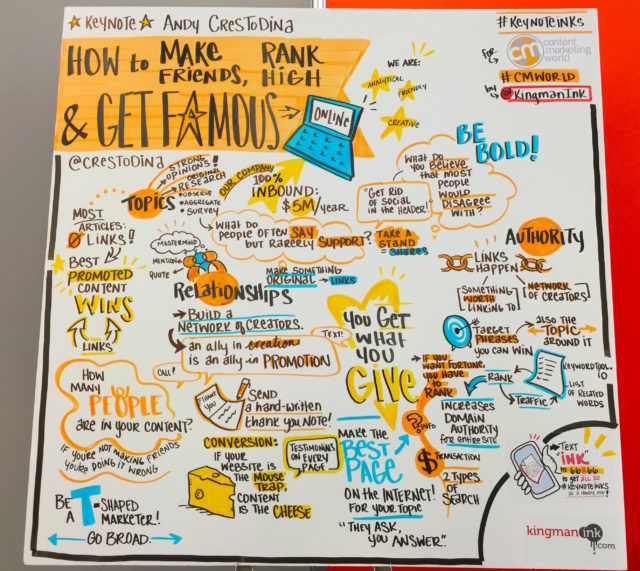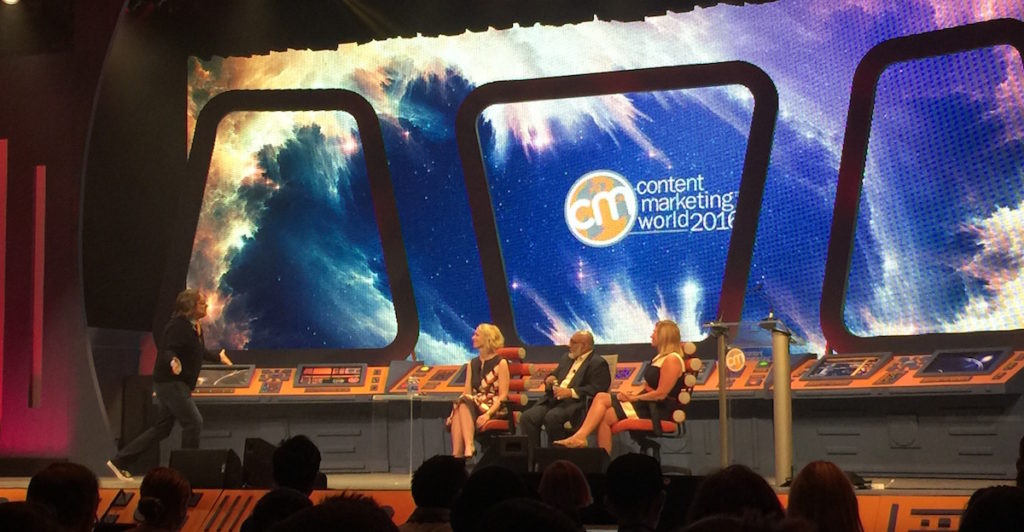The biggest event in content marketing rolled into Cleveland this week and it was out of this world. That’s not just because Content Marketing World 2016 had Star Wars’ own Luke Skywalker (okay, Mark Hamill) as its keynote speaker. The four-day event, which wraps today, brought together over 3,500 content marketers to talk about best practices for creating effective content.
Why Cleveland? It’s the hometown of the Content Marketing Institute, which was established back in 2007 by founder Joe Pulizzi, to educate the industry and advance the idea that marketing should provide value to customers before attempting a sales pitch. Not longer after, marketing guru Seth Godin would declare that “content marketing is the only marketing left” in a modern era when interruptive advertising is easy for consumers to avoid and known to be ineffective.
Content Marketing World began not long afterward to bring the brightest minds in content strategy and custom publishing together. This year was no exception. The halls were filled with distinguished and influential voices in content marketing filling the halls. Just about every aspect of a branded content strategy, implementation and distribution was discussed.
While many top industry consultants and analysts peopled the stages, leading brands like Microsoft, Wells Fargo, LEGO, Kellogg’s, Dell and dozens more showed others how they have built effective content strategies, teams and measurements of their success.
Content Marketing World: Research Informs The Show
The conference always begins with a release of research conducted by the CMI in collaboration with MarketingProfs, influential content expert Ann Handley’s consulting firm. This year, the evidence suggested that content marketers still struggle to get full support within their organizations. Only 20 percent said their organization is fully committed to content marketing. That means there is budget, appropriate hires and executive commitment to sustain a content strategy. Pulizzi called from the main stage for content marketers to work hard to get buy-in because without a full commitment to regular content, brands will not gain the benefits of the strategy. “Mediocre content will hurt your brand more than doing nothing at all,” he declared.

A common theme throughout the conference was not just what to do but also what to stop doing. CMI’s strategy director, Robert Rose, repeatedly told marketers to stop building massive PDFs and start finding more effective content formats to engage their prospects. Michael Brenner, former VP of SAP and current CEO of the Marketing Insider Group, put it simply, “Research shows that 74 percent of CEOs are unhappy with their CMOs. Stop doing stuff that doesn’t make an impact.”
Keynote speaker Andy Crestodina offered marketers good advice on building effective content. He advised marketers to understand the purpose of content before creating it. Some content is for informational purposes, while other content is for transactional experiences. He offered many keys to content success, including working with influencers that can help spread your message because he noted that, “it’s not the best content that wins—it’s the best-promoted content that wins.”

Many Fortune 5,000 brands showcased their content success on stage and in panels throughout the week. LEGO, whose passionate commitment to content spans many decades, highlighted how they inspired user-generated content on social channels with a $100 campaign that generated millions in earned media value. Their innovative approach tapped into the creativity they knew their fans would express when challenged to build a simple character and take him to iconic places around the world. Marriott’s award-winning content studio set out a mission to “become the Red Bull of hospitality” and has done so with innovative original, influencer and real-time content that has tapped into the zeitgeist effectively. REI’s Eric Hess made a pitch for long-form content instead of the snackable, short-form content bites that won’t deliver the same kind of SEO and educational benefits their brand is enjoying. Wells Fargo showed that an innovative and nimble approach to content is helping them win over the hard-to-reach Millennial audiences that represent an increasingly large portion of their customer base.
With workshop days before and after the main event, Content Marketing World is an ideal forum for learning the craft or just getting much better at creating valuable content for your customers. Attendees learned everything from the right technology to support a content team, to creating compelling social content, to building global marketing teams and planning for multi-channel content production.
What about Mark Hamill? Why was he the closing keynote speaker for a content marketing event? As the actor took the stage, he admitted that an article written by the aforementioned Michael Brenner last week shook his confidence that he belonged on the stage. But Hamill need not have been worried. The article’s excellent analysis explained it all in the context of storytelling. Content marketing is about sorting out the right way to tell a story. It’s about redemption. As Brenner put it, “If marketing has a marketing problem, then content marketing is the solution. If banner ads are evil (and you know they are), then content marketing is the hero.”

